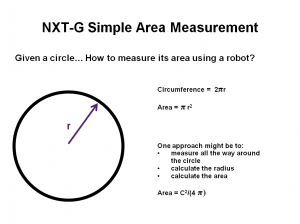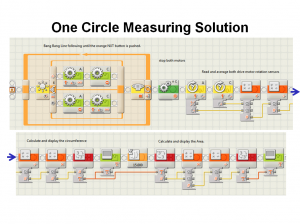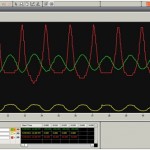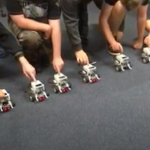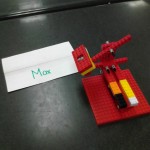With all the available STEM options, we often get asked Why Robotics? So here are some quick thoughts to kickstart your thirty second elevator speech for robotics program support. See what you think.
I like educational robots because they make abstract concepts real.
With this opening salvo, and depending on your primary expertise and your audience’s understanding of your education field, you can then add three or four more quick examples. I try to use short, clear examples and then broaden further if the audience is truly interested, and doesn’t allow you to be interrupted.
Some ideas I see that follow from an approach of manifesting the abstract:
– Pi … what better way to force a solid use and understanding of the relationship between a circle’s circumference and its radius than by making the kids use it to do something with their robot? Make it go 39 inches ahead, turn left 90 degrees (and for kids that can handle the math, make them calculate how to control the motors to do that – and to do it exactly).
– Data Logging and easier access to the underlying truths / descriptions of the physical world. I was always the kid who gooned his physics labs because I could not hit the stop watch at the right time, or read the wrong scale on the meter, etc. etc. With automated data logging, the students can focus on what’s being measured and know that they can mostly trust the data being recorded. And for kids that are up for the math, you can connect some of those measurements to things they encounter every day – like their music. For a pendulum math example, see: .//pendulum-mathematics/
– Logical / Critical Thinking. To do anything with a robot, they have to first understand its configuration and then direct its movements and sensor use in a logical manner – often uniquely their own. There is almost always more than one way to accomplish an assigned task, and an infinite number of ways to do things wrong… and some students will seem to try most of the wrong ones – but those trials and frustrations fade quickly when they figure it out.
Again, I try to use examples that manifest abstract ideas in something you can pick up, program, and use.
Here’s an example showing the use of pi and a little Algebra that should be readily accessible: Ask the students to program the robot to measure the area of a circle. Here are two images that show the problem statement and one approach with NXT-G:
If these examples don’t fit your teaching role, then replace them with some that fit better. But I strongly suspect that most administrators and executives believe they are busy and need issues put to them in quick, clear, bite-sized pieces. If we ramble, we lose them. If we dither, hedge, or wheedle, we lose their attention, and ultimately their support.
Latest posts by Craig (see all)
- NXT exercises – One approach - 2 February 2016
- Why I like educational robots - 18 November 2013
- Area Measurement: Follow the Path - 27 May 2013
- Program structure – simulating publish and subscribe - 25 May 2013
- Pendulum mathematics - 25 May 2013
